|
|
|
Introduction
The Bellevue Lamp Plant of GE Lighting was opened in 1941 to provide increased capacity for the production of general service incandescent lamps. Following the later arrival of photoflash types it soon shifted focus to special lamps, especially after absorbing the nearby East Cleveland Lamp Plant. Bellevue ran into difficulties in the early 1980s due to the gradual obsolescence of its photochemical flashbulbs, this being compounded by GE's general overcapacity in lamp manufacturing, plus stiff foreign competition. The resulting "Lighting Leadership Plan" led to the closure of nearly a quarter of the GE sites, with BLP's history coming to an end in 1985. Its remaining production was divided between the Euclid and Mattoon Lamp Plants.
|
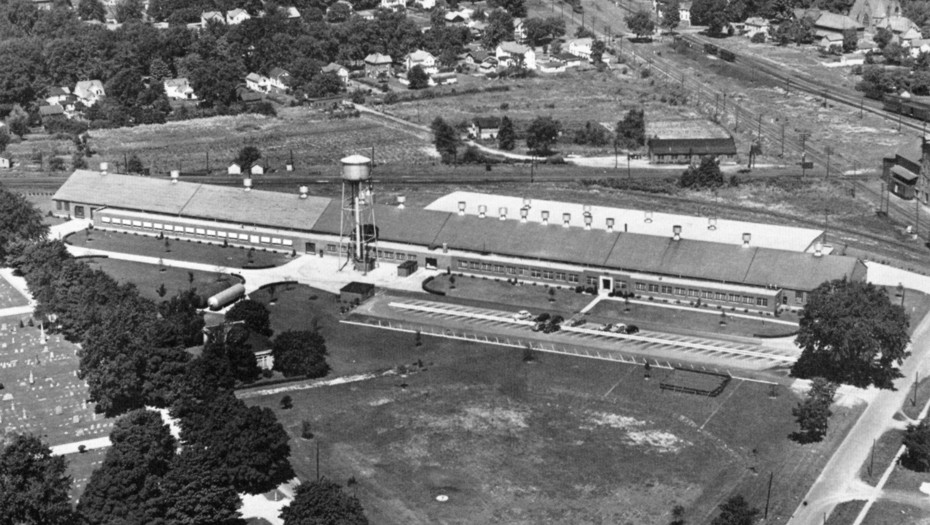 Aerial View of the Bellevue Lamp Plant of General Electric U.S.A., approx. 1945
Aerial View of the Bellevue Lamp Plant of General Electric U.S.A., approx. 1945
|
| Address |
420 Monroe Street, Bellevue, Ohio, USA. |
| Location |
41.2682°N, -82.8373°E |
| Opened |
1941, with start of construction 1940. |
| Closed |
1985. |
| Floorspace |
Unknown. |
| Products |
Incandescent A-line 30W & 60W, Photoflash, Incandescent Projectors, Valve Base Projectors, Halogen Single and Double-Ended Projectors, Halogen MR Dichroic Reflectors, Marc/Gemini Short Arc Metal Halide, Xenon Flashtubes. |
Start of Operations
The first formal step in the conception of a lamp plant at Bellevue was taken in November 1940, when General Electric purchased eleven acres of land for a new 20,000 square foot factory. Bids for its construction were submitted in February 1941, and on 5th March the contracts were awarded, with Steinle-Wolf Inc. selected as general contractors. The ground-moving operations began without delay on 11th March, and just a few weeks later on 9th April, it was announced that GE had already decided to double the size of the facility to 40,000 square feet.
Construction proceeded swiftly and the formal opening of the new factory took place on 1st September 1941. The first lamps to be made were ordinary A-Line incandescent types in ratings of 30 and 60 Watts, which were undergoing rapid growth and for which General Electric required additional manufacturing capacity. Both had a cost of just ten cents in the year of opening. The first production consignment was shipped on 15th September.
|
Arrival of Photoflash
Another product undergoing tremendous expansion in the early 1940s was the photochemical flash lamp, and by 1943 it was decided to concentrate manufacturing of many of these types at the new Bellevue works. It proved to be a tremendous success and was the main product line at the factory for the following eighteen years. It is not known whether this replaced the original incandescent production, or if those types were also continued in parallel.
The first photoflash types to be made at Bellevue were the PH11, PH22 and 22B, PH31 and 31B, and PH50 and 50B. These were the state of the art in their day and were large devices, physically the same size as ordinary incandescent lamps in A15, A19 and A21 bulbs. All models contained a dose of fine metal wire in the form of a wool-like bundle, sealed inside a bulb filled with oxygen to aid its swift and intense combustion so as to produce a brilliant flash of light. The ignition was triggered by a small incandescent filament coated with explosive primer to start the combustion process. Later years saw a tremendous progression in the miniaturisation of the flashbulb, and Bellevue's production evolved to produce, among others, the famous No.5 and M3 types. The pinnacle of photoflash developments was reached with the miniature all-glass AG-1B.
Photochemical flashlamps were spectacularly usurped in the market by the invention of the electronic xenon flashtube, another lamp which would later be adopted in Bellevue's product portfolio. The production of photochemical flashbulbs ended on the 4th September 1984, when the final 150,000 M3-B types were shipped. General Electric is believed to have exited the manufacture of photoflash lamps at that time, and as demand continued to dwindle sourced in the remaining few types which were still needed from its former competitors - principally from Sylvania Montoursville and Dyersburg in USA, and Sylvania Tienen in Belgium.
|
The Special Incandescent Lamps
In 1961 GE closed its East Cleveland Lamp Plant which was located within the company's NELA Park headquarters, and it was decided that Bellevue should take over the manufacture of photographic and projection lamps having ordinary incandescent type bases. Other photo-lamps having special bases were transferred to Mattoon Lamp Plant in Illinois.
The new department represented a significant challenge for Bellevue, whose experience until then had been limited to a relatively simple line of photoflash lamps. By contrast the new specialty incandescent department had to produce around 400 different lamp designs, many of which had complicated and widely differing filament mount constructions. These new lamps were intended for applications such as projection and photography, studios, sports stadia, operating theatres, along with train and aircraft headlights. A representative illustration of the filament mount constructions of the principal types can be seen in the photograph below.
|
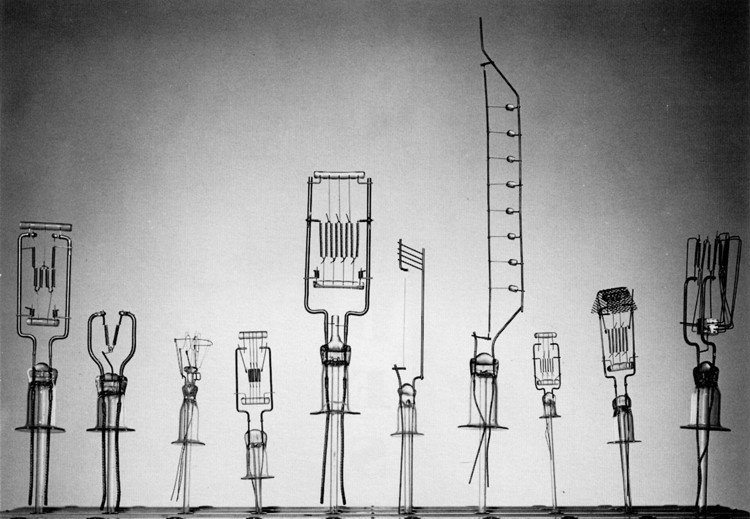
Selection of Filament Mounts of the Special Incandescent Department
|
A second expansion of the incandescent group took place in October 1973 when one of the lamp types which had originally been transferred from East Cleveland to Mattoon, finally re-joined the rest of the production at Bellevue. This was for a family of projector lamps having so-called 4-pin or Valve-type bases. The construction of that lamp had originally been invented by Sylvania, and enabled a considerable miniaturisation of the lamps by shortening their length. The new pin-type "wafer stems" were much shorter than the conventional incandescent stem assembly, and the filament could be brought closer to the lamp base.
|
Arrival of Quartz Lamps
Following GE's invention of the Quartz-Halogen lamp in 1959, the company was quick to exploit the technology so as to permit the development of lamps having increased lifetime and/or light output compared with the ordinary incandescent types. The fused quartz necessary for the bulb envelope of these lamps was at first a rather expensive material, and the resulting high cost of the lamps precluded them from completely replacing the incandescent originals. Moreover, the first lamps were only possible in high-current ratings, and it took several decades to fully master the halogen lamp technology such that it could be extended to low power lamps. However, the increased performance proved to be an ideal fit with the photographic and projection market, and the high cost of the lamps was less objectionable in that sector. Consequently, GE's Photo-Lamp Department quickly acquired a strong position in the new halogen technologies.
At first these lamps were produced under laboratory-like conditions - presumably at GE's Headquarters site of NELA Park in Cleveland, although possibly also at the company's East Cleveland factory. By 1961 demand had grown to the level that a dedicated factory was required, and owing to the similarity of application with the special incandescent lamps that had been transferred from East Cleveland to Bellevue, it was decided that Bellevue, as one of the principal factories of GE's Photo-Lamp Department, should become home of the company's new 'Quartzline' manufacturing.
The original range consisted of simple double-ended linear quartz tubes. Single ended types arrived shortly afterwards, and were followed in 1965 by the first pressed-glass dichroic reflector halogen types. Initially these were also employed in projection applications, but in 1977 GE's further invention of the Multi-facetted reflector fuelled interest in these glittering gem-like lamps for general display lighting. Bellevue saw demand increase tremendously and in the early 1980s the "Precise" range of MR16 lamps made its debut. These 12-Volt MR16 lamps in ratings of 20, 35, 42, 50 and 75W were engineered specifically to suit the requirements of the accent and display lighting markets, and due to their technical excellence vs competitive offerings, GE acquired a powerful global position in this important new lamp category.
|
Diversification into Discharge Technology
Another major product innovation of GE was that company's 1964 commercialisation of Multi-Vapor - the world's first Metal Halide discharge lamps. Developed by Gilbert Reiling of NELA Park, these were at first offered only in high wattages for outdoor and industrial lighting. Another NELA Park pioneer, Elmer Fridrich, who had been involved in the invention of the original tungsten-halogen lamps and of course in the later evolution of photographic and projection types to be made at Bellevue, was keen to explore the possibilities of metal halide technology in his application area.
This resulted in the 1965 launch of the world's first short arc metal halide lamp for projection applications : the GE MARC-300. It was a 300-watt lamp (ANSI-code EZM) featuring a very short arc gap between the electrodes, the tiny arc tube being pre-focussed in a compact dichroic reflector. Unusually the lamp was designed for operation on Direct Current instead of the usual AC mains. This was essential to obtain a steady image, and the new lamp was at once adopted by professional projector manufacturers such as Bell & Howell. It offered considerable improvements vs. incandescent and halogen photo lamps, in particular a daylight-like colour and a high efficacy of 60 Lumens per Watt. Moreover, it challenged the short arc Xenon lamp owing to its reduced risk of explosion, smaller dimensions, simpler power supply, higher efficacy and the user-friendly precision optical system thanks to its pre-focussed reflector.
Rather than manufacturing the new MARC lamps alongside the Multi-Vapor metal halide production for general lighting, GE chose to set up the new operation at the plant having the most experience in its intended application area : Bellevue. Thus in 1965 the factory underwent a small, but technologically significant expansion into this new domain of discharge lighting. A more powerful 350W model, the MARC 350/16T (EZT) soon arrived. In 1980 the production of the original MARC lamps was augmented with the similar Gemini-300 (EZG) lamp, which was engineered for use with a dedicated new electronic ballast and provided a 75% increase in screen brightness.
The Discharge division underwent a second expansion in 1978 when the production of the FT-series of Xenon Flashtubes was relocated from Cleveland to Bellevue. These long-arc impulse discharge lamps are intended to produce a short but brilliant flash of light, and improvements in electronics technology to facilitate their control was enabling these newer lamps to take over a portion of the market served by Bellevue's photochemical flashlamps. Once their volumes had risen above the levels that could be handled in the small Pilot Plant at NELA Park, it was of course logical that they should also make the move to Bellevue. |
Factory Infrastructure
During its existence the Bellevue Lamp Plant outgrew its premises on a number of occasions, and several building additions had to be made. The first was started in December 1945, when the manufacturing space was extended and a new warehouse constructed behind the main building. Both were completed on the 13th June 1946.
In 1953 the office area was doubled, and the small dispensary was enlarged. By 1974 still more space was required. The warehouse was extended, and a modern office block was constructed alongside the factory.
One of the reasons for the proliferance of lamp and glass factories in the Ohio area is because of the abundant local sources of natural gas - this fuel being a crucial ingredient in the glassmelting and lampmaking operations. The reserves are often quite small however, and the future of many Ohio factories has been troubled or even ended due to gas shortages. At Bellevue it was no different, and in 1946 it became necessary to install its own emergency gas reserves. Forty large cylinders, each measuring 2' diameter and 40' in length were installed underground outside the factory. By 1953 the increase in production meant that the reserves had to be doubled again, with another forty cylinders being installed underground. This additional capacity ensured that the plant could run for up to three weeks without fresh gas deliveries. The underground tanks ensured a stable situation until 1977 when gas shortages once again became apparent, and two immense 30,000 gallon propane cylinders were installed above ground.
Bellevue is also noteworthy because of the unusual measures taken to heat the factory during the periods of gas shortage - all available fuel having been directed, of course, to the lampmaking machinery instead of heating. Bellevue is a railway town, and the solution to the plant's heating problems was most creatively solved by siting an old steam locomotive between two of the factory buildings! It was purchased for the hefty sum of US$ 5,800 from the Nickel Plate Railroad in Frankfort, IN, and driven into a siding within the works where it was permanently stationed. During its years of service it consumed some seven carloads of coal, and not only heated the factory but provided a copious source of steam for the operations requiring that vapour. A stack of fifty-gallon oil drums welded together formed a chimney which carried its exhaust up above the factory buildings. After the gas shortages were over, it was taken via the Pennsylvania Railroad to the Sandusky junkyard and sold for precisely the same sum as it had been acquired.
Following the egress of the steam locomotive, its space was roofed over and provided accommodation for a new machine shop. This enabled Bellevue to become almost entirely self-sufficient in the repair and production of parts needed to keep its machinery operating.
|
Closure
The 1980s marked a painful period in the history of GE's lighting operations. The company had invested heavily in the previous years to create state-of-the-art manufacturing operations, and the new equipment and manufacturing processes left it with considerable overcapacity. In parallel, the American lampmakers were facing increased competition from overseas and lamp prices were falling.
Bellevue's problems were compounded by the fact that one of its major products, the photochemical flashlamp, was nearing obsolescence due its replacement by the Xenon flashtube in photographic markets. Of course, Bellevue was also producing the Xenon flashlamps but those had a lifetime of many thousands of flashes - whereas the old photochemical lamps delivered only a single flash and had to be replaced every time. Naturally, this reduced production volumes by orders of magnitude and the factory could not survive without major restructuring. At the peak of its operations Bellevue employed some 900 staff, but the speed of its decline is evident from the fact that its payroll had dwindled to 700 in 1982, and by June 1983 stood at just 440.
General Electric's 'Lighting Leadership Plan' was unveiled to re-secure the company's position in the north American lighting business, and on the 8th June 1983 it was announced that ten of the company's 42 lamp plants would close by the first quarter of 1985 - including Bellevue, Youngstown and one other in Ohio.
The transfer of some of Bellevue's product lines to other factories was gradual - with Quartzline and 4-pin Projectors moving to Mattoon Lamp Plant in Illinois, and the remainder of the special incandescent production being transferred to the nearby Euclid Lamp Plant in Cleveland, Ohio.
After closure the factory site was taken over by Progress Plastics, who ran production for several decades further until the weekend of Thanksgiving 2008, when closure was announced. The entire site was destroyed by fire that weekend, in a suspected arson attack. The buildings have since been levelled and the land remains vacant.
|
Photographs
|
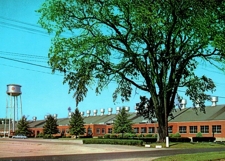 |
|
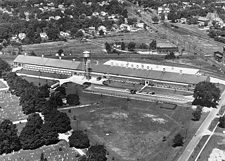 |
|
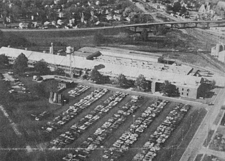 |
|
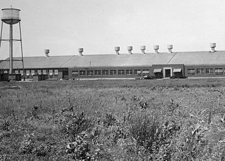 |
| General View - 1959(3) |
|
Aerial View - c.1945(1) |
|
Aerial View - c.1983(1) |
|
General View - c.1941(1) |
|
 |
|
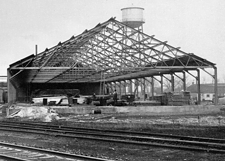 |
|
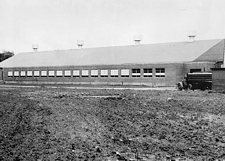 |
|
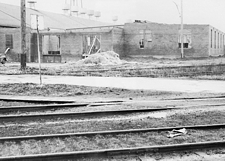 |
| General View - c.1945(1) |
|
First Extension, March 1946(1) |
|
First Extension, June 1946(1) |
|
New Warehouse, January 1946(1) |
|
 |
|
 |
|
 |
|
 |
| New Warehouse, March 1946(1) |
|
New Office, January 1974(1) |
|
New Office, April 1974(1) |
|
New Office Wing, 1974(1) |
|
 |
|
 |
|
 |
|
 |
| New Office Wing, 1974(1) |
|
New Warehouse, May 1974(1) |
|
New Warehouse, 1974(1) |
|
Christmas Lights Display, 1959(1) |
|
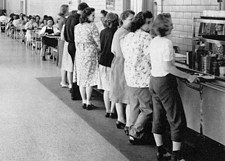 |
|
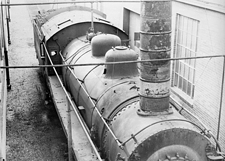 |
|
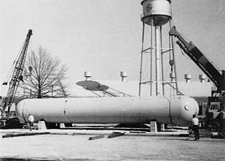 |
|
 |
| New Cafeteria(1) |
|
Steam Locomotive Heating Plant(1) |
|
Installation of Gas Tanks, 1977(1) |
|
New Machine Maintenance Shop(1) |
|
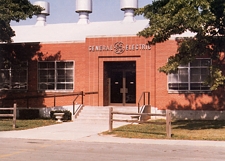 |
|
 |
|
 |
|
 |
| Front Entrance, c. 1985(1) |
|
Conveyor of #5 Photoflash Bulbs(1) |
|
The Inside Lacquer Department(1) |
|
The Outside Lacquer Department(1) |
|
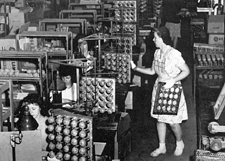 |
|
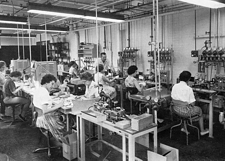 |
|
|
|
|
| Photoflash Inspection & Packing(1) |
|
Quartzline Dept., November 1962(1) |
|
|
|
|
Examples of Bellevue Lamps
Quartzline Halogen Photo/Projection
|
 |
|
 |
|
 |
|
 |
|
|
|
|
| FAL Overhead Projector |
|
Q750T12CL Theatre |
|
EJM MR16 Dichroic |
|
ENL MR16 Dichroic |
|
|
|
|
Discharge Lamps
|
 |
|
 |
|
 |
|
 |
|
|
|
|
| Marc 350/16T |
|
Gemini 300 |
|
PXA-80 Xenon Flash |
|
FT-24 Xenon Flash |
|
|
|
|
References & Bibliography
- 44 Years of Remembering Bellevue Lamp Plant - published by the employees of BLP, 1985.
- The Bellevue Gazette, Wednesday 8th June 1983, front page.
- Postcard Image, 1959.
- Private Communication, Norm Westphall, during visit to GE Euclid Lamp Plant, 1997 May.
- Private Communication, Laura Willis, former employee of GE Bellevue Lamp Plant, 2017 August.
|
|
|
|
|